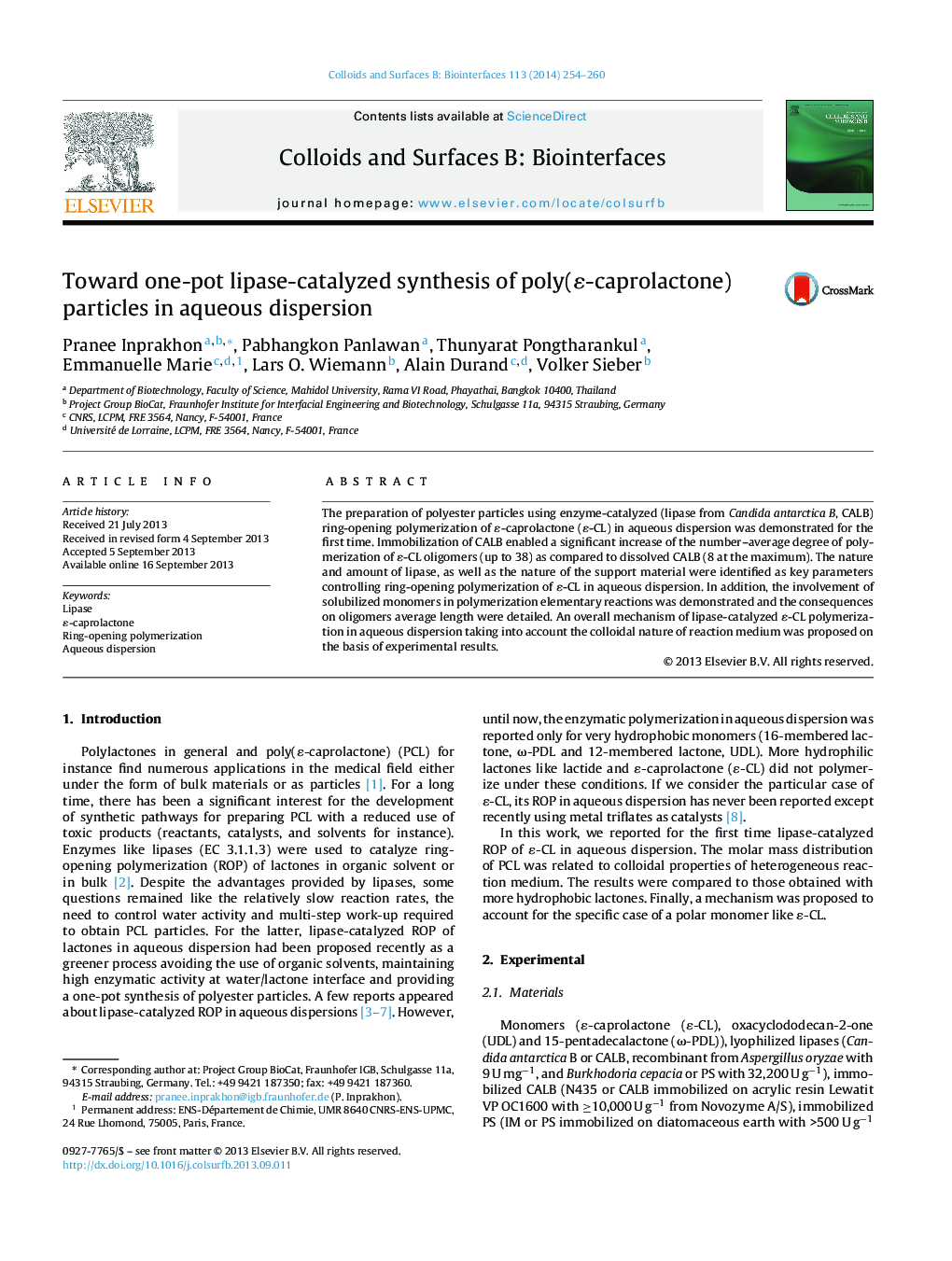| Article ID | Journal | Published Year | Pages | File Type |
|---|---|---|---|---|
| 599988 | Colloids and Surfaces B: Biointerfaces | 2014 | 7 Pages |
•Lipase-catalyzed synthesis of polyester particles was carried out in water.•ɛ-caprolactone polymerization in aqueous dispersion with lipase catalysis was reached.•Roles of enzyme immobilization and monomer partial water-solubility were evidenced.•Links between colloidal monomer dispersion and molar mass distribution were detailed.•An overall kinetic scheme was proposed to account for experimental results.
The preparation of polyester particles using enzyme-catalyzed (lipase from Candida antarctica B, CALB) ring-opening polymerization of ɛ-caprolactone (ɛ-CL) in aqueous dispersion was demonstrated for the first time. Immobilization of CALB enabled a significant increase of the number–average degree of polymerization of ɛ-CL oligomers (up to 38) as compared to dissolved CALB (8 at the maximum). The nature and amount of lipase, as well as the nature of the support material were identified as key parameters controlling ring-opening polymerization of ɛ-CL in aqueous dispersion. In addition, the involvement of solubilized monomers in polymerization elementary reactions was demonstrated and the consequences on oligomers average length were detailed. An overall mechanism of lipase-catalyzed ɛ-CL polymerization in aqueous dispersion taking into account the colloidal nature of reaction medium was proposed on the basis of experimental results.
Graphical abstractHeterogeneous reaction medium containing immobilized lipase and substrate monomer (ɛ-CL) under the form of dissolved molecules and excess droplets.Figure optionsDownload full-size imageDownload as PowerPoint slide
